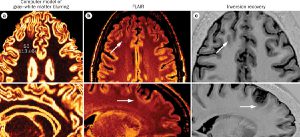Abstract
Nearly one-third of patients with focal epilepsy experience disabling seizures that are refractory to pharmacotherapy. Drug-resistant focal epilepsy is, however, potentially curable by surgery. Although lesions associated with the epileptic focus can often be accurately detected by MRI, in many patients conventional imaging based on visual evaluation is unable to pinpoint the surgical target. Patients with so-called cryptogenic epilepsy represent one of the greatest clinical challenges in many tertiary epilepsy centers. In recent years, it has become increasingly clear that epilepsies that are considered cryptogenic are not necessarily nonlesional, the primary histopathological substrate being subtle cortical dysplasia. This Review considers the application of new advances in brain imaging, such as MRI morphometry, computational modeling and diffusion tensor imaging. By revealing dysplastic lesions that previously eluded visual assessments, quantitative structural MRI methods such as these have clearly demonstrated an increased diagnostic yield of epileptic lesions, and have provided successful surgical options to an increasing number of patients with 'cryptogenic' epilepsy.

